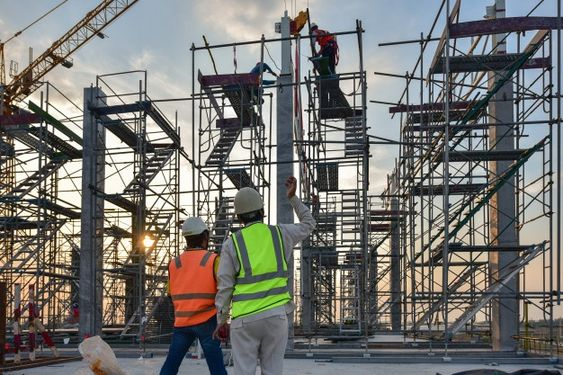The building sector offers a significant threat to the environment, with construction and demolition waste materials such as wood, concrete, and asphalt stacking up swiftly. It is a large polluter, accounting for around 4% of particle emissions, more water contamination events than any other sector, and hundreds of excessive noise complaints each year.
Making your construction firm more environmentally friendly may reduce pollution, and eventually your company’s reputation. Among the various problems associated with sustainable building techniques, we examine approaches to make your next construction project as sustainable as feasible.


Use Eco-Friendly Materials.
Even the most basic building materials have a significant environmental impact. Concrete, for example, is a building mainstay, but its production emits a significant amount of greenhouse gases into the sky, with studies claiming that concrete is accountable for 4-8 percent of the world’s CO2.
What are your options? You’d be surprised, I’m sure. Sustainable building materials abound, and they’re really effective. For instance, utilizing straw bales rather than concrete/rebar has shown to be economic and ecologically beneficial because straw bales are 100 percent biodegradable when the time comes, equally as strong as concrete, and much cheaper.
Consider replacing less sustainable materials with bamboo, recycled plastics, eco-friendly pex fittings rammed earth, mycelium, FSC-certified timber, and other eco-friendly alternatives.
Encourage the Use of Paper Blueprints, Sketches, and Specifications
This may seem insignificant, but avoiding the usage of paper blueprints, sketches, and specifications may save a large number of trees. But, most significantly, this will save you a lot of time, eliminate material waste, and help you complete your job swiftly. Rather than relying on paper, you should enroll in construction management software.
This program enables users to arrange the whole construction project, calculate and regulate various expenses, manage the inventory and documents, evaluate risk, and track project status, among other things. Most businesses provide cloud-based systems that allow real-time communication between on-site and off-site employees. Your project will undoubtedly have a beneficial influence on the environment due to greater on-site productivity and decreased waste.
Waste Should Be Disposed of Responsibly.
A zero-waste building site is a pipe dream. We are all aware of the fact to construct something, much must be demolished. What you do with all of those discarded materials, on the other hand, makes a difference.
Rather than throwing everything away, reuse or recycle as much as possible in your building firm. You’d be surprised at what can be repurposed and the advantages of doing so — stone, plastics, metal, plywood, glass, timber, and other materials may all be recycled or reused in future building projects.
Environmental credentials are rapidly attracting the attention of both the government and consumers and businesses throughout the country are taking note. Companies that make an effort to protect the environment will have a bright future.
Conduct Efficient Transportation
The carbon impact of construction transportation soon piles up. Maintain a careful watch on your fleet and strive to run your transportation system as effectively as possible. Determine the most carbon-efficient paths from A to B, for instance. Make only one journey when one suffices. Repair your fleet and consider changing to eco-friendly energy.
Effectively managing your transportation fleet may save you money by making your organization more efficient overall. It’s a plus if you can reduce your environmental effect!
Reducing Noise Pollution
Although it does not cause climate change, noise pollution is quite real and maybe extremely bothersome. Firms can reduce the amount of extra noise produced by their projects by limiting the usage of heavy equipment to daytime hours, eliminating engine idling time, or switching to quieter, more fuel-efficient versions.
With urban sprawl anticipated to rise tremendously in the next years, projects will be completed in ever-shrinking quarters. Even from active building sites, sound may be reduced with a little preparation and planning. People working or living close by will undoubtedly be grateful.
Avoid Chemical Run-off.
Building sites are prone to chemical leaks that pollute the environment. This occurs more frequently if a building site is not properly managed. As a consequence, it is critical that you safeguard local water and soil sources during the construction period.
To do this, silt fences may be used to keep dirt from washing away, and if there are any toxins around the site, ensure they are kept away from any water bodies since this not only affects the water but also any possible wildlife that lives in it.
Conclusion
In an eco-conscious society, sustainable businesses have an advantage over less sustainable counterparts. Sustainability is an important marketing point. Follow these guidelines to help protect the environment while growing your company. You won’t be sorry!
